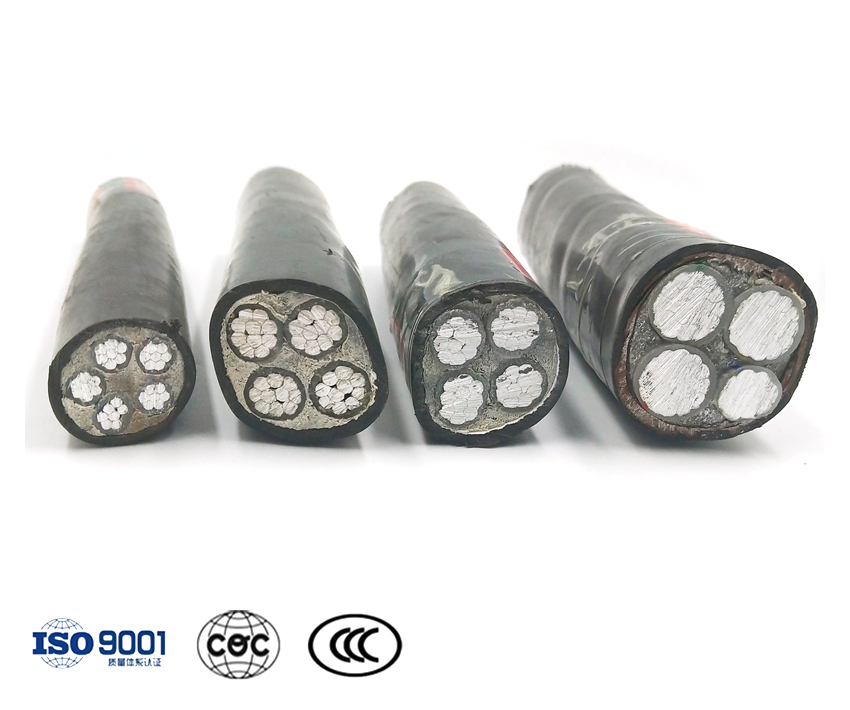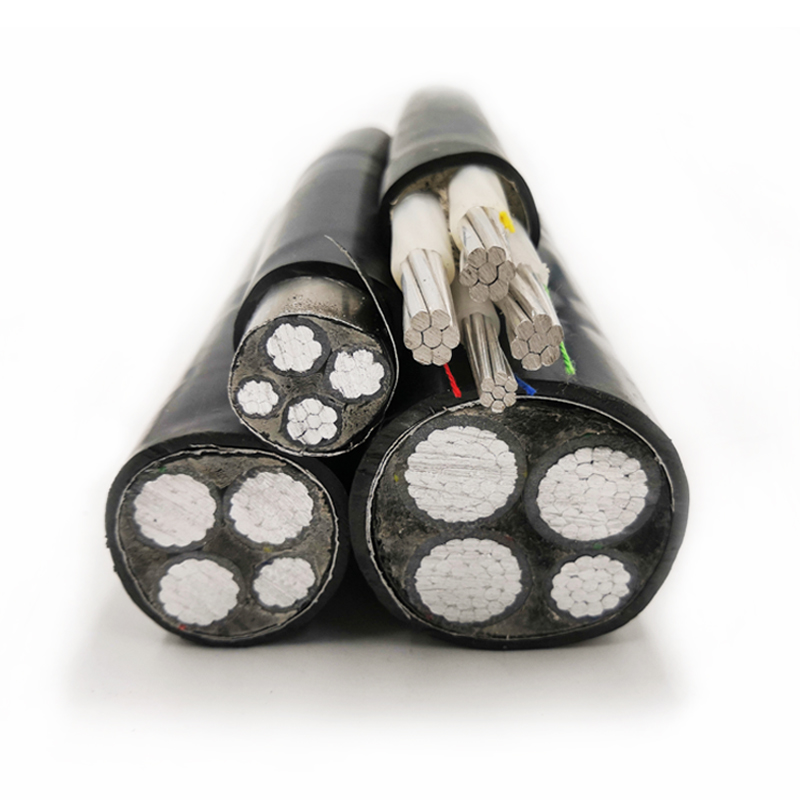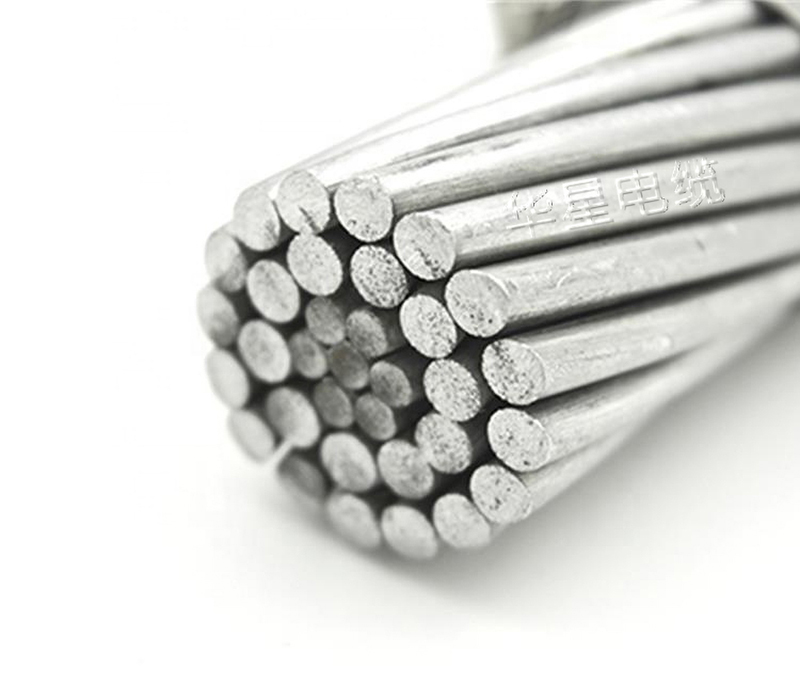1.Coefficient of compression of wire core
Aluminum alloy cable and the traditional power cable process structure and auxiliary materials have certain differences, aluminum alloy cable conductor using aluminum alloy monofilament tightly pressed stranded way, its core compression coefficient reached 97%, the conductor is very dense, and the traditional copper-core cable, aluminum-core cable in the conductor cross-section can clearly see the difference (the traditional cable production process, the core of the tight pressure coefficient can only reach 82% or so).

2. Flexibility
Aluminum alloy cable using ASTM-B800 electrical control with 8000 series aluminum alloy wire, adding the appropriate amount of copper (Cu), iron (Fe), magnesium (Mg) … … and rare earth aluminum alloy materials and intermediate alloy materials developed through a special synthetic annealing process of high-tech new environmentally friendly energy-saving power cable, its conductor flexibility can be super strong, the Super flexibility can ensure the safety performance of aluminum alloy cable in actual application to reach or even surpass the copper-core cable, at the same time, it brings great advantages to the actual installation of aluminum alloy cable. In the actual test, direct hand folding test can get the aluminum alloy conductor is very flexible, it can be folded repeatedly or like a rope repeatedly winding, destructive folding aluminum alloy monofilament, experimental conclusion at least 18 times roundtrip before the crack or fracture phenomenon, while ordinary aluminum monofilament generally folded three times to crack, five times to absolutely break, an important disadvantage of ordinary aluminum wire is brittleness, in the As long as the installation of a certain angle of twisting, the conductor will have cracks, cracks will heat, corrosion, is an important cause of fire, which is also not times the universal application of the fatal reason.
3. Cable Structure
The aluminum alloy cable core adopts tightly pressed stranded way, the conductor cross-section is round core (traditional cable core more fan-shaped), the insulation adopts three-color co-extruded cross-linked polyethylene insulation process, the core arrangement rules, the whole cable round and flexible.
4.Bright and lustrous wire core
The aluminum alloy conductor has a bright and lustrous core cross section,such as overhead AAAC conductor 1/0 awg ,4/0 awg, which has a distinct organoleptic difference from conventional aluminum-core cables, due to the optimized crystallization of the conductor as a result of the rare earth alloys added during the smelting process.

5. Creep performance
The creep properties of the alloy conductor are almost identical to those of the copper core conductor, as shown by experiments: the yield strength of copper is 6.0, while that of the alloy conductor is 54, which is almost identical to that of copper, and 300% higher than that of the aluminum core conductor.
6. Extendibility
Elongation is an important indicator of the mechanical properties of the conductor, is an important symbol of the product and the size of the product can withstand external forces. It is also an important indicator for testing the mechanical properties of the cable bare conductor. Aluminum cable after annealing treatment of the elongation can reach 30%, while the elongation of copper cable for 30%, ordinary aluminum rod elongation of 15%, is an important indicator of the ability to replace the copper cable.
7. Tensile Strength
Since the density of aluminium alloys is only 30.4% of that of copper, even if the cross-sectional area of aluminium alloys is increased to 150% of the copper cross-sectional area, the weight of aluminium alloys is still 45% of that of copper, which means that the tensile strength of aluminium alloys is still lower than that of copper. Advantage. In large-span power projects, due to its specific gravity advantage, its tensile strength advantage in the equivalent premise is particularly prominent. It not only saves a large number of bridges and reduces the labor intensity of installation engineers, but also speeds up the installation process, saves construction time and greatly reduces the comprehensive installation cost.
8. Anti-corrosion performance
Aluminum alloy conductor itself has excellent anti-corrosion properties, the good anti-corrosion properties of aluminum alloy conductor from the inherent anti-corrosion properties of aluminum, its surface when in contact with the air, will immediately form a layer of about 2 ~ 4 μm thick layer of dense oxide film, this layer is very dense, especially resistant to all forms of corrosion, and thus has the characteristics of withstand the worst of the environment, in the actual service life of 10 years longer than copper cable. above. (The current domestic use of alloy cable time is not long, just 3 to 5 years, so from the domestic actually can not verify its actual service life. Can only refer to the actual use of foreign countries, on the current use of the European and American countries for 40 years, his actual service life is more durable than copper cable).

9. Electrical Performance
The resistivity of aluminum alloys is between aluminum and copper, slightly higher than aluminum and lower than copper, and an aluminum alloy conductor of the same length weighs only half as much as copper for the same cutoff current. If the conductivity of copper is 100%, the conductivity of the alloy conductor is about 62.5%, the specific gravity of the alloy is 2.7, and the specific gravity of copper is 8.9, then (8.9/2.7)×(0.612/1)=2, i.e., the resistance of 2 units of copper is the same as the resistance of 1 unit of mass of the alloy. The same cutoff current, resistance, and voltage losses as copper are achieved.
